Art & Exhibitions
Pop Pioneer Allen Jones on His First New York Solo Show in 40 Years
The artist reflects on his career.
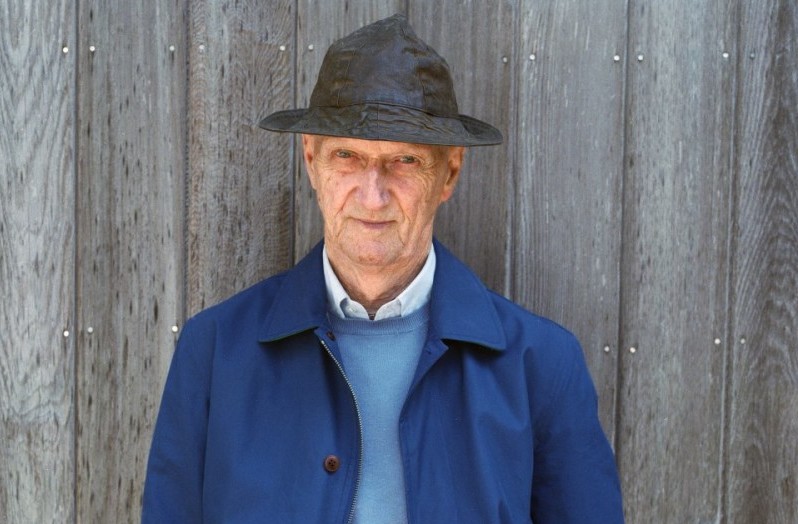
The artist reflects on his career.

Henri Neuendorf

Just after the opening of Allen Jones‘s retrospective at Michael Werner‘s Upper East Side gallery—the British pop artist’s first New York solo show in 40 years—artnet News spoke to the controversial painter and sculptor about his influences, his divisive depiction of the female figure, and going against the art establishment. Dressed in a dark blue suit and a pink tie, the 79-year-old artist was in exceptional shape; he insisted on standing during the entirety of the interview so that he could discuss each of the works on view.
Jones made a name for himself in the mid ’60s for his provocative, colorful, and daring depictions of women. In 1969, when his controversial and infamous “Furniture” series, erotic fiberglass sculptures of scantily-clad women posed as furniture, was exhibited, it caused an uproar. In a subsequent exhibition at the Tate in 1986, one of the works was targeted in an acid attack. But that didn’t stop Jones, whose pop art influenced paintings and sculptures propelled him to success.
With works from important public and private collections, the current show at Michael Werner, curated by Norman Rosenthal, represents a unique survey of the artist’s iconic imagery that may not be seen in its current constellation again for several years. Speaking to artnet News, Jones looked back at his long and remarkable career.
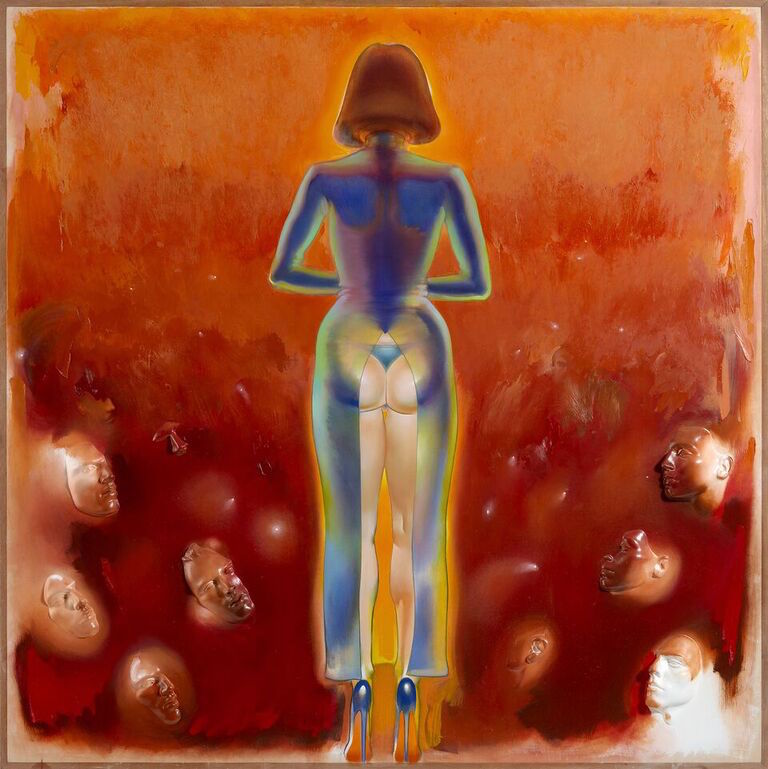
Allen Jones Ovation (2010).
Photo: Courtesy Michael Werner Gallery, New York
How did you arrive at figuratism and especially the female figure?
The first few years of professional life were really absorbing the lessons of the recent past and recent art history, which for me would have been surrealism and futurism. You gradually find your own voice. With the early work, my anxiety as a young student was to have the work taken seriously and be seen as fine art. You sort of process the images through the grille of fine art, but then what you learn is that you have to actually speak directly and find a language to speak directly rather than through those filters. So by the mid ’60s, when I returned to the UK after having lived in New York—and I suppose it was important to experience New York firsthand; if it had been 1910 one would have been in Paris… In a way, I found my own voice by about the mid ’60s in the late paintings. The blatant preoccupation with the female figure came to the fore, whereas in the earlier work it’s more embedded.
The other thing was that I’m interested, and have been for years, in the canvas being a visual performance, so the canvas is a performance area. So taking subjects which are about performance, like the magicians, or the stage, or dance, they became a vehicle for actually picturing what the artist actually does.
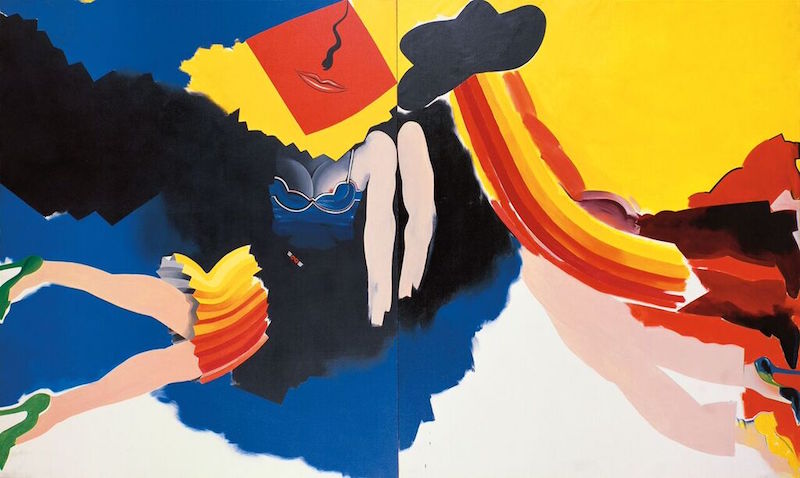
Allen Jones Male Female Diptych (1965)
Photo: Courtesy Hirshhorn Museum and Sculpture Garden, Smithsonian Institution, Washington DC
What’s behind the use of perspective and dimension in your paintings?
The mainstream of modern art through the ’60s, when I started working professionally, was towards abstraction. The main thrust of art history in the 20th century was from Mondrian and from Minimalism. Although I could empathize with that, I couldn’t do it; I temperamentally could not get rid of representation.
And so nevertheless you knew the problem, the visual language problem of how to deal with that, and one of the things is that by definition when you paint an image which is a recognizable image, the area next to the image is space. And so the whole thing is how do you counter that? Or how do you make it clear that it’s not an illusionistic depth? That it’s not pretending to be a room, or pretending to be a field or something? And so I tend to use color as a way of counteracting that.
The lesson from 20th century art was that if color is the key to the paintings, there is an optical space created on the retina between the play of one color against the other. And so the shallow spaces which exist in my pictures are what I call a real optical space. It is a depth which you build with a color reaction on the brain. I’m not sure that makes sense…
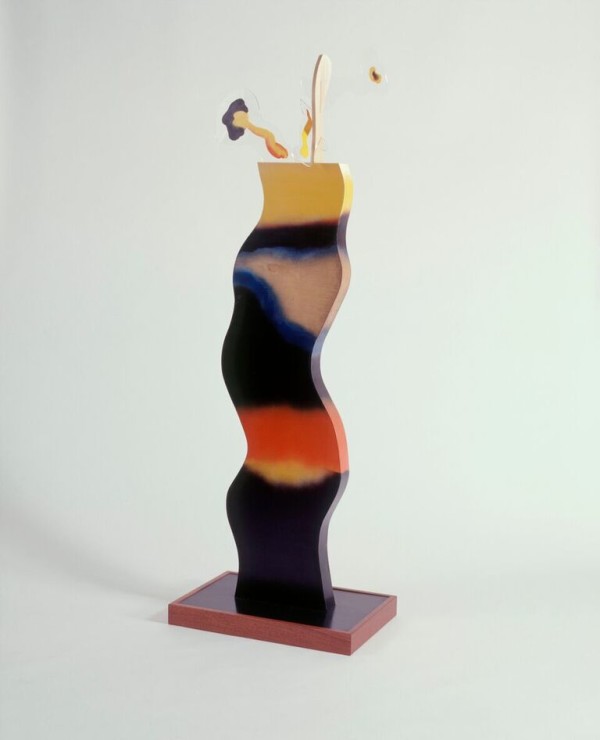
Allen Jones Third Man (1965)
Photo: Courtesy Michael Werner Gallery, New York
Why did you shift from painting to sculpture and back again?
I spent the ’60s trying to develop my own pictorial language for describing the figure. And by the end of the decade I realized that I was modeling and suggesting volume so strongly that maybe I should take a chance and actually make the image rather than reproduce it two dimensionally. And so that was my second excursion into sculpture.
This [Third Man (1965)] is one of the earliest ones. This is from the mid ’60s and was very much to do with the idea again of using color. The shift to three dimensional figures released the painting of having to be that descriptive. I think that the works after those initial furniture sculptures became more lyrical, more free, and the brush strokes started to play a bigger part in the paintings. And the same with steel.
In the ’80s I had another idea, I thought well what if you actually make the figure real, what if you cut it out. Well of course if it was paper or canvas, it would collapse. But if you fold it, it gives it an arbitrary physical strength. Whereas I only occasionally make three dimensional, volumetric figures using resin fiberglass, I’ve been consistently working with steel, using that folded idea pretty regularly since the ’80s.
So to me there are three different languages. There’s the painting, there’s the steel, and there’s the fiberglass. I think its an interesting idea to say the same thing, but you’re speaking three different languages, but hopefully you’re making sense the same as you would be if you were speaking German, French, or Croatian.
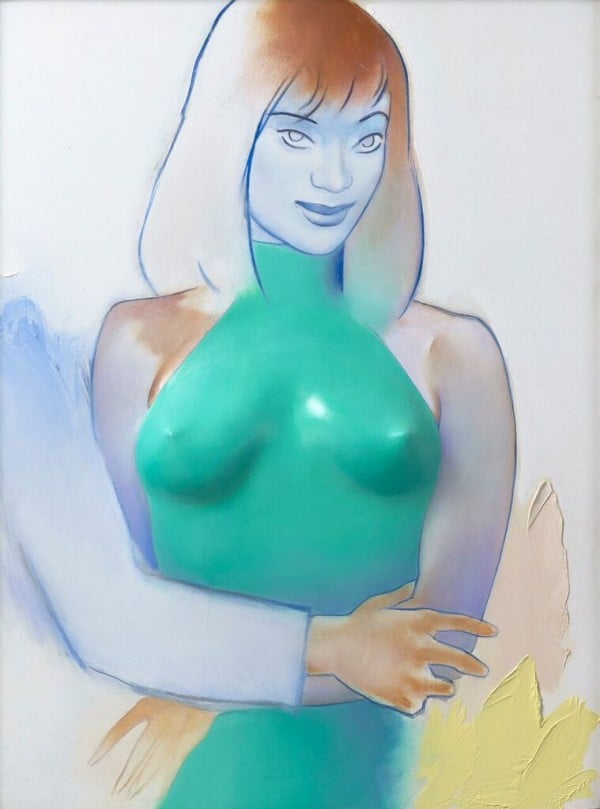
Allen Jones Treasure Chest (2014)
Photo: Michael Werner Gallery, New York
What is behind your desire to go against the art establishment?
Either you can use your natural talent to replicate what has gone before, and you can speak intelligently using a visual language. Every period in art history, you’ve got the people who write the vocabulary, and then you have lots of people who learn the vocabulary and use it quite intelligently. There are lots of Fauvists apart from Matisse and Derain, but you remember the people who actually establish the rules.
And so for me wanting to make representation of the figure, you had to find a way to do it that didn’t rely on a crutch of the history of art. So instead of making the figures in stone or marble or bronze, the thrust was that if you make something where there’s no history to the fabrication process, then people have to somehow make up their mind from the start. There’s no “Oh I don’t like it very much but it’s obviously art.”
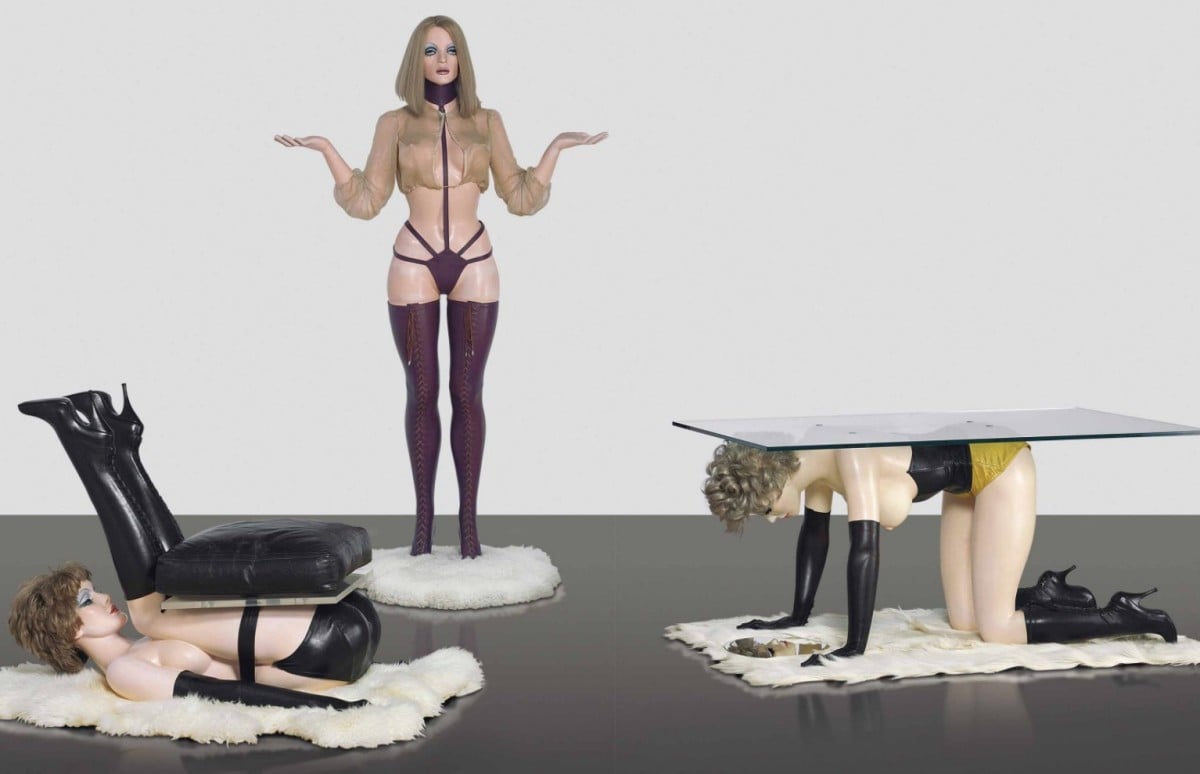
Allen Jones Chair, Hatstand, and Table (1969)
Photo: Christie’s, London
Do you think you’re misunderstood?
I think I have been misunderstood, but that seems to have been a generational problem from the ’70s. The feedback I have from people who are much younger than myself means that I think things have turned a corner.
Do you think people overreacted to the “furniture” series?
No. I just think that people’s reactions are based on their own experience and their own expectations. And the problem with an artist is that he’s responsible for making visible what he makes visible. But he’s not responsible for how people use it.
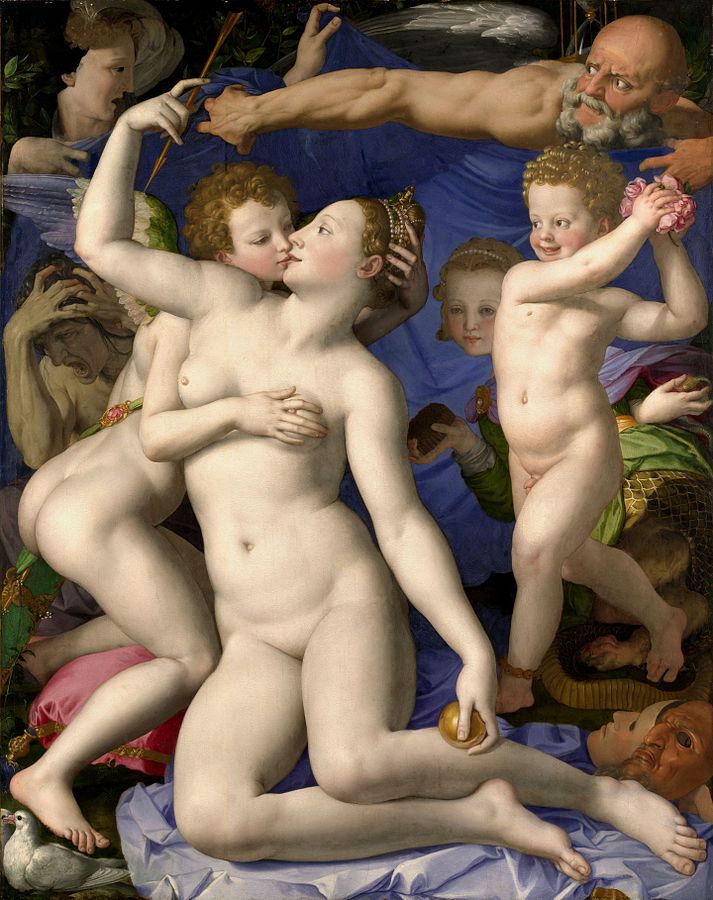
Agnolo Bronzino Venus, Cupid, Folly and Time (1545)
Photo: Wikimedia Commons
If you could own any artwork from art history what would it be?
It would be very hard, there’s got to be a dozen things. But most recently I’ve been thinking again about a Bronzino in the National Gallery in London called Venus, Cupid, Folly and Time (ca. 1545). I could live with that forever.